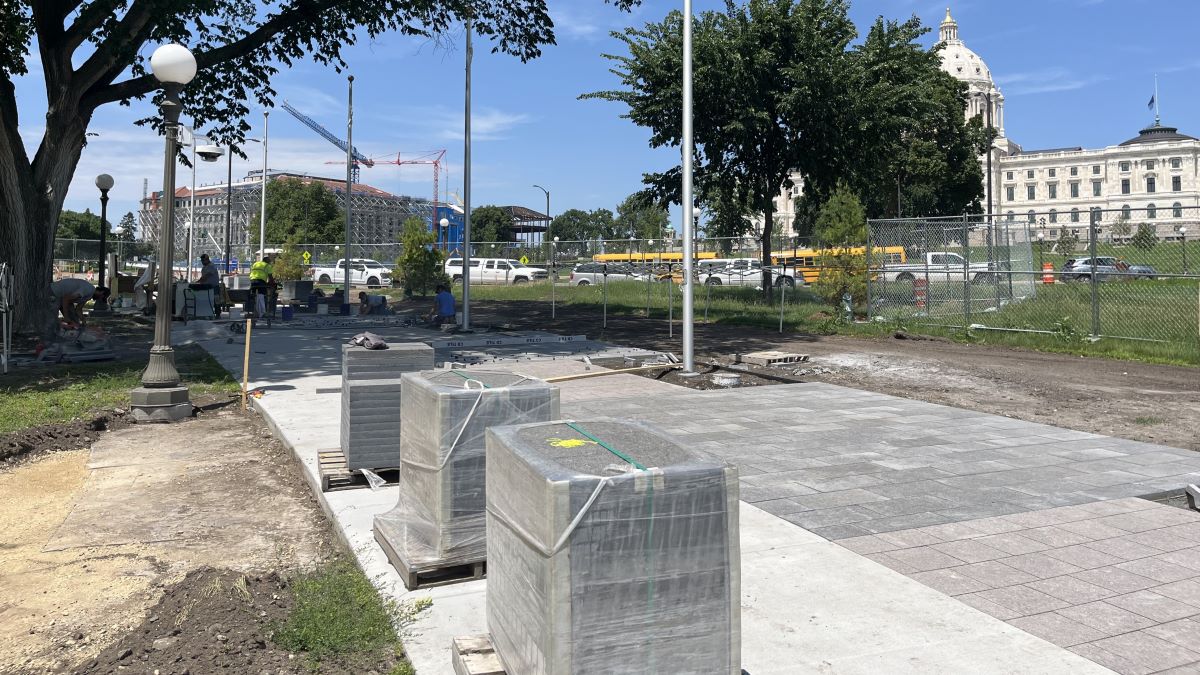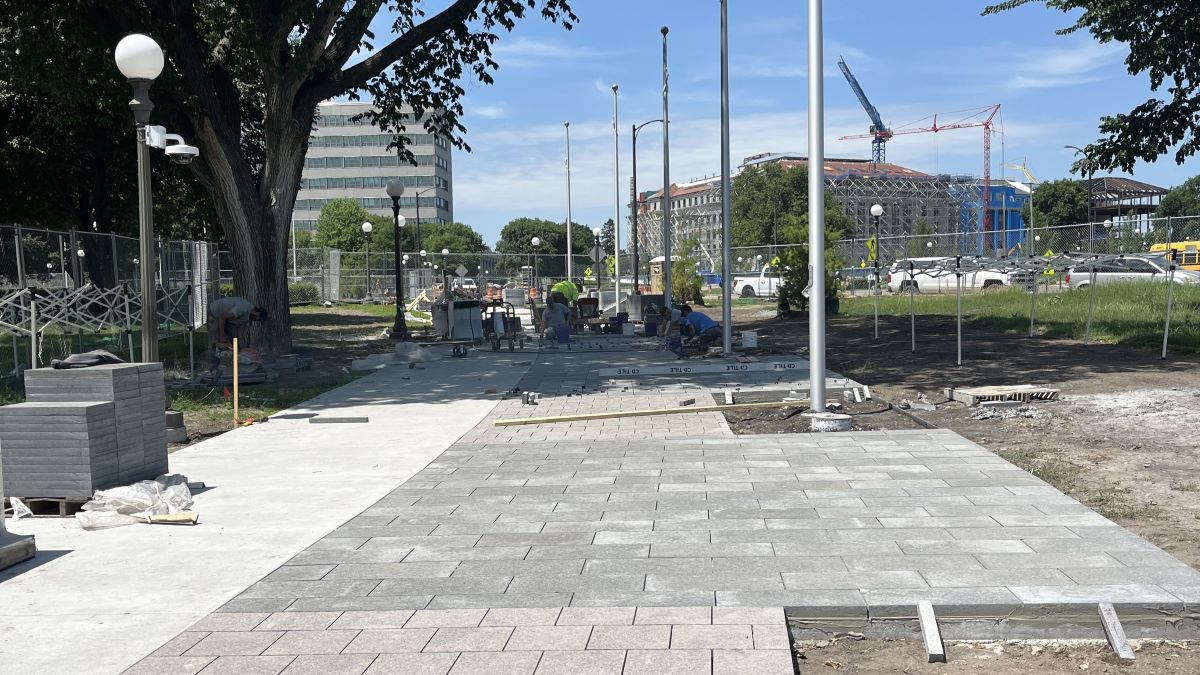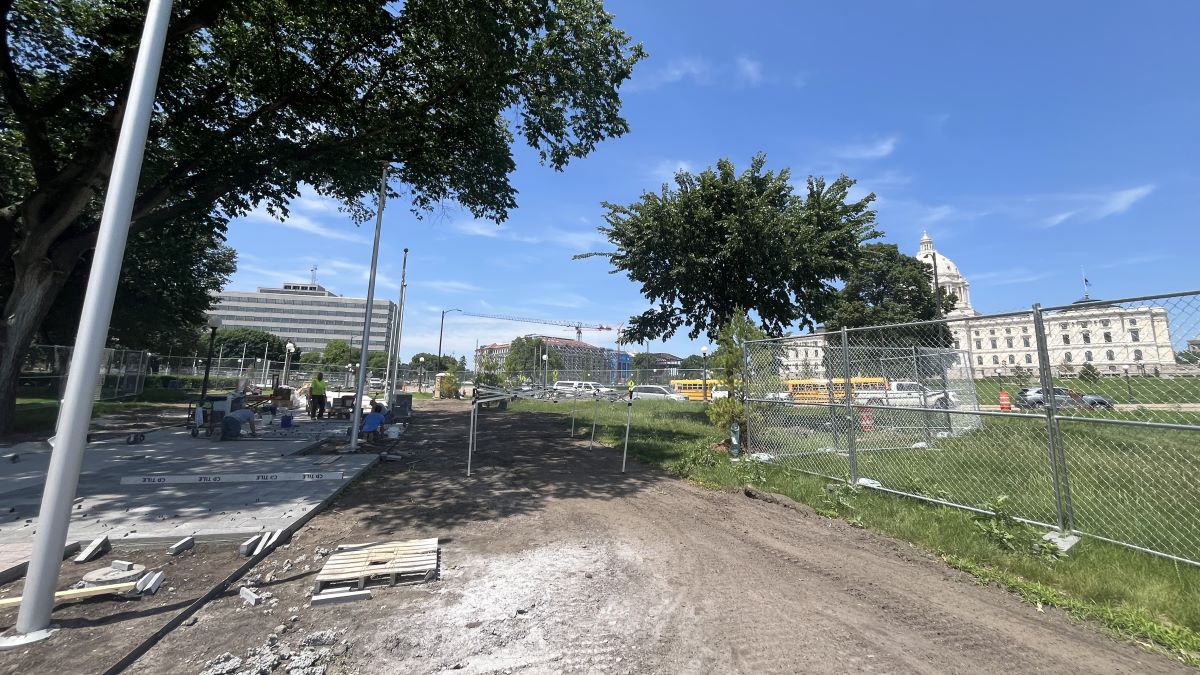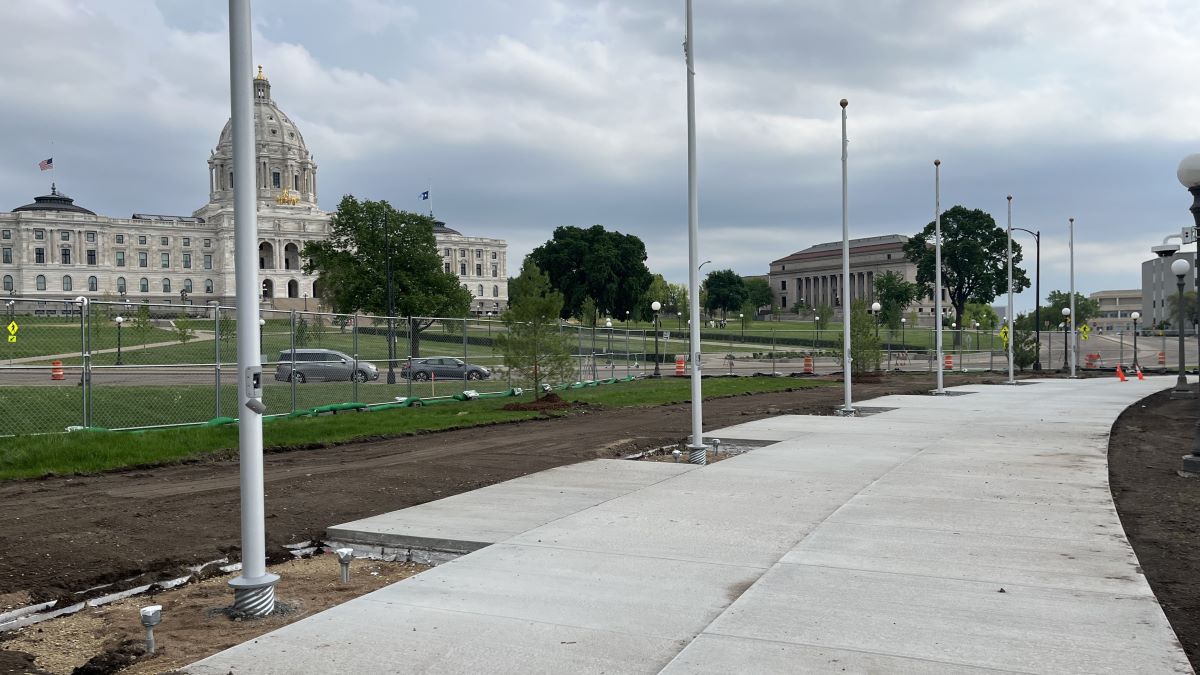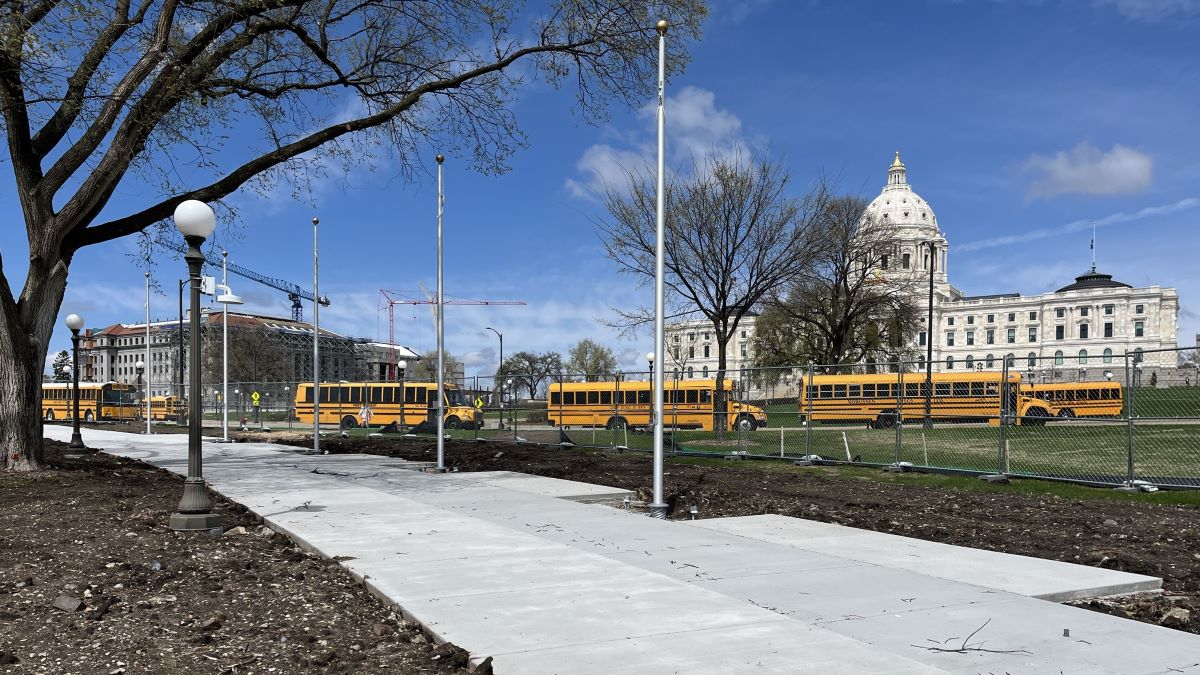Tribal Flag Plaza
The Capitol Area Architectural and Planning Board (CAAPB) worked on the development of the Capitol Mall Design Framework from November 2023 – December 31, 2024. Through this process over 14,000 Minnesotans were engaged and provided feedback on how the Capitol Mall should change over the next decade. The Board heard from Minnesotans all over the State, including each of the eleven (11) federally recognized Tribes of Minnesota. As part of this process, the Board developed a recommendation for Phase 1 of the Capitol Mall Design Framework which included a Tribal Flag Plaza honoring the sovereign Tribal Nations within the borders of Minnesota.
The Capitol Mall Design Framework and proposed Phase 1 projects went through a public process seeking feedback from Minnesotans. This culminated in several Board meetings where these engagement findings and feedback were presented to the Board and discussed. The Board voted to approve the Phase 1 projects at the May 15, 2024, Board meeting. Phase 1 included a vision to implement a core tenant of the Capitol Mall Design Framework – to be more welcoming to more Minnesotans. The Department of Administration is tasked with implementing Phase 1 of the Capitol Mall Design Framework. Phase 1 includes: 171 tree plantings on the Capitol Mall; a pedestrian plaza and street mural on Rev Dr. Martin Luther King Jr Boulevard; and the Tribal Flag Plaza. The Tribal Flag Plaza is an important component of Phase 1 of the Capitol Mall Design Framework. The arc of the plaza to the south of Rev Dr. Martin Luther King Jr Boulevard is part of a larger vision of the commemorative circle that will connect visitors to Commemorative Works in the lower Mall per the objectives of the Capitol Mall Design Framework.
The Tribal Flag Plaza will feature flags from each of the eleven (11) federally recognized Tribes in Minnesota.
• Cansa'yapi / Lower Sioux Indian Community
• Gaa-waabaabiganikaag / White Earth Nation
• Gaa-zagaskwaajimekaag / Leech Lake Band of Ojibwe
• Gichi-Onigaming / Grand Portage Band of Lake Superior Chippewa
• Mdewakanton / Shakopee Mdewakanton Sioux Community
• Misi-zaaga'iganiing / Mille Lacs Band of Ojibwe
• Miskwaagamiiwi-Zaagaiganing / Red Lake Nation
• Nah-gah-chi-wa-nong / Fond du Lac Band of Lake Superior Chippewa
• Pezihutazizi / Oyate (Upper Sioux Community)
• Tinta Wita / Prairie Island Indian Community
• Zagaakwaandagowininiwag / Bois Forte Band of Chippewa
CAAPB staff worked with each of the Tribes to seek input and feedback on the design of the flag plaza from the materials to the plantings. The Tribal Flag Plaza will feature sacred plantings from each of the Tribes at the base of each flagpole, eight white pines, as well as 10 granite benches for visitors to reflect while visiting the plaza.
Minnesota Indian Tribes
In Minnesota, there are four Dakota (Sioux) communities and seven Anishinaabe (Chippewa, Ojibwe) reservations. Find links to the web sites of those communities that have web sites. Also included are links to other valuable resources.
Federally Recognized Indian Tribes
What does the term Federally Recognized mean?
Bois Forte Band of Chippewa
The Bois Forte Band of Chippewa is located in northern Minnesota, approximately 60 miles south and west of International Falls, MN.
Fond Du Lac Reservation
The Fond du Lac Band of Lake Superior Chippewa Reservation lies in northeastern Minnesota adjacent to the city of Cloquet, MN, approximately 20 miles west of Duluth, MN. The Fond du Lac Reservation, established by the LaPointe Treaty of 1854, is one of six reservations inhabited by members of the Minnesota Chippewa Tribe.
Gichi-Onigaming / Grand Portage Band of Lake Superior Chippewa
The Grand Portage Reservation is located in Cook County in the extreme northeast corner of Minnesota, approximately 150 miles from Duluth. It is bordered on the north by Canada, on the south and east by Lake Superior and on the west by Grand Portage State Forest.
Leech Lake Band of Ojibwe
The Leech Lake Reservation, located in the forests of north-central Minnesota, offers an oasis of natural beauty. Towering pines fringe the Reservation’s many lakes, two of which are among the largest in the state.
Lower Sioux Indian Community
The Lower Sioux Indian Community is located on the south side of the Minnesota River at the site of the U.S. Indian Agency and the Bishop Whipple Mission, a part of the original Reservation established in the 1851 Treaty. It is in Redwood County, two miles south of Morton and six miles east of Redwood Falls.
Mille Lacs Band of Ojibwe
History, tribal government, educational material, links to casinos and museum.
Prairie Island Indian Community
Prairie Island Indian Community is located in southeastern Minnesota, north of Red Wing, between Highway 61 and the Mississippi River. The people of Prairie Island are Mdewakanton Dakota and have lived on Prairie Island for countless generations.
Red Lake Band of Chippewa Indians
Historical information, Tribal planning, employment and training, Pow-wow pages, gaming, telephone directory and more.
Shakopee Mdewakanton Sioux (Dakota) Community
The Shakopee-Mdewakanton Reservation is located entirely within the city limits of Prior Lake, in Scott County, Minnesota. The Reservation was known as the Prior Lake Reservation until its reorganization under the Indian Reorganization Act on November 28, 1969. The Tribal headquarters is in Prior Lake, Minnesota.
Upper Sioux Community
The land called Pejuhutazzi Kapi (the place where they dig for yellow medicine) has been the homeland of the Dakota Oyate (Nation) for thousands of years. The Upper Sioux Community is located in Yellow Medicine County.
White Earth Reservation
The White Earth Reservation is located in the northwestern Minnesota counties of Mahnomen, Becker, and Clearwater. The Reservation is located 68 miles from Fargo and 225 miles from Minneapolis/St. Paul. Tribal headquarters are in White Earth, Minnesota.
Other Resources
Links to various Indian education and cultural resources.
Native Languages of the Americas
Find language resources.
Indian Affairs Council, Minnesota
MIAC is the official liaison between the State of Minnesota and the 11 Tribal Governments within the state. The Council provides a forum for and advises state government on issues of concern to urban Indian communities. Minnesota was the first state in the nation to establish an Indian Affairs agency and provided a model for other states to follow.
Tribal Codes and Constitutions
The Tribal Court Clearinghouse has links to various Native American tribal codes.


